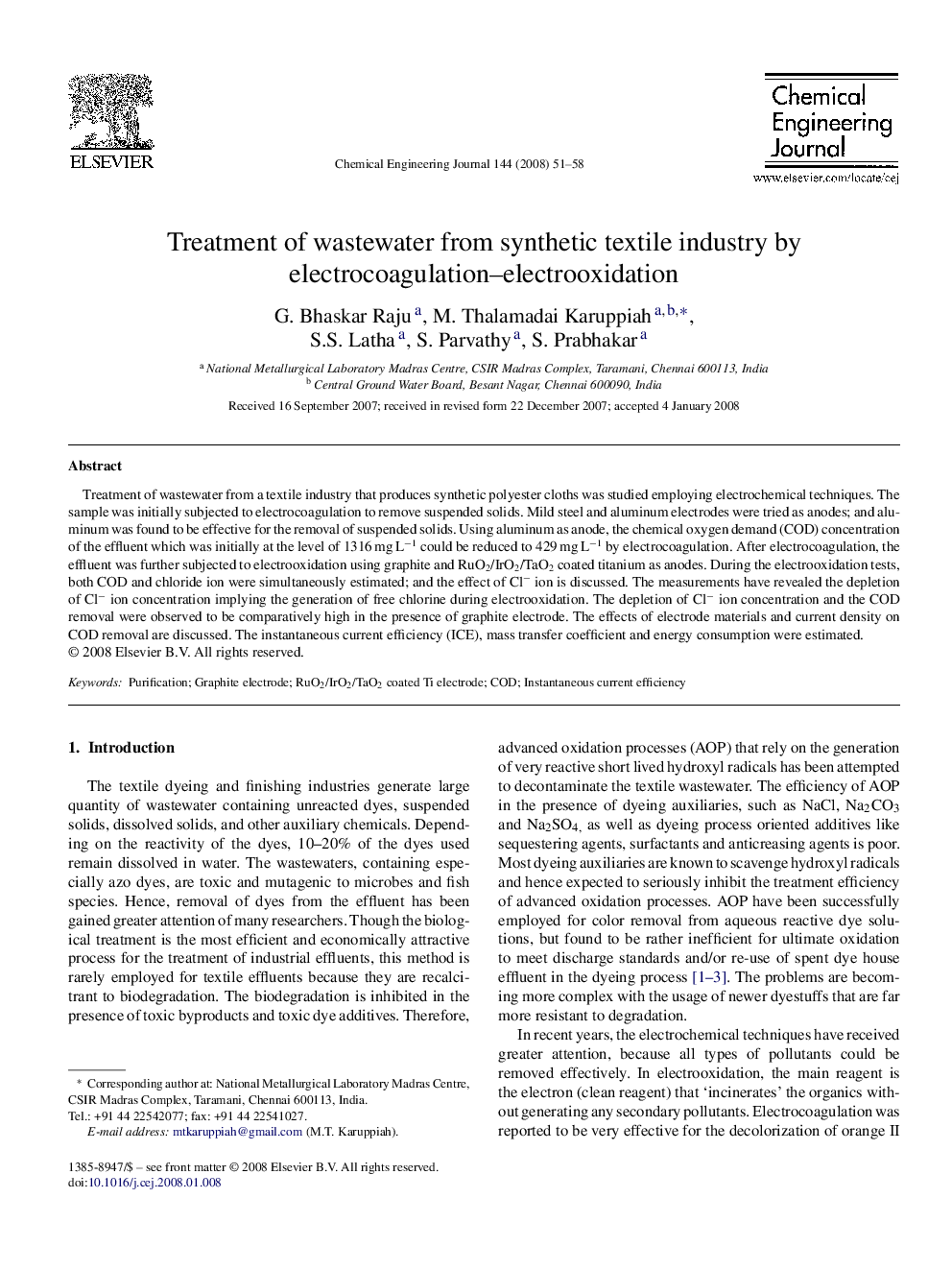| Article ID | Journal | Published Year | Pages | File Type |
|---|---|---|---|---|
| 153019 | Chemical Engineering Journal | 2008 | 8 Pages |
Treatment of wastewater from a textile industry that produces synthetic polyester cloths was studied employing electrochemical techniques. The sample was initially subjected to electrocoagulation to remove suspended solids. Mild steel and aluminum electrodes were tried as anodes; and aluminum was found to be effective for the removal of suspended solids. Using aluminum as anode, the chemical oxygen demand (COD) concentration of the effluent which was initially at the level of 1316 mg L−1 could be reduced to 429 mg L−1 by electrocoagulation. After electrocoagulation, the effluent was further subjected to electrooxidation using graphite and RuO2/IrO2/TaO2 coated titanium as anodes. During the electrooxidation tests, both COD and chloride ion were simultaneously estimated; and the effect of Cl− ion is discussed. The measurements have revealed the depletion of Cl− ion concentration implying the generation of free chlorine during electrooxidation. The depletion of Cl− ion concentration and the COD removal were observed to be comparatively high in the presence of graphite electrode. The effects of electrode materials and current density on COD removal are discussed. The instantaneous current efficiency (ICE), mass transfer coefficient and energy consumption were estimated.
